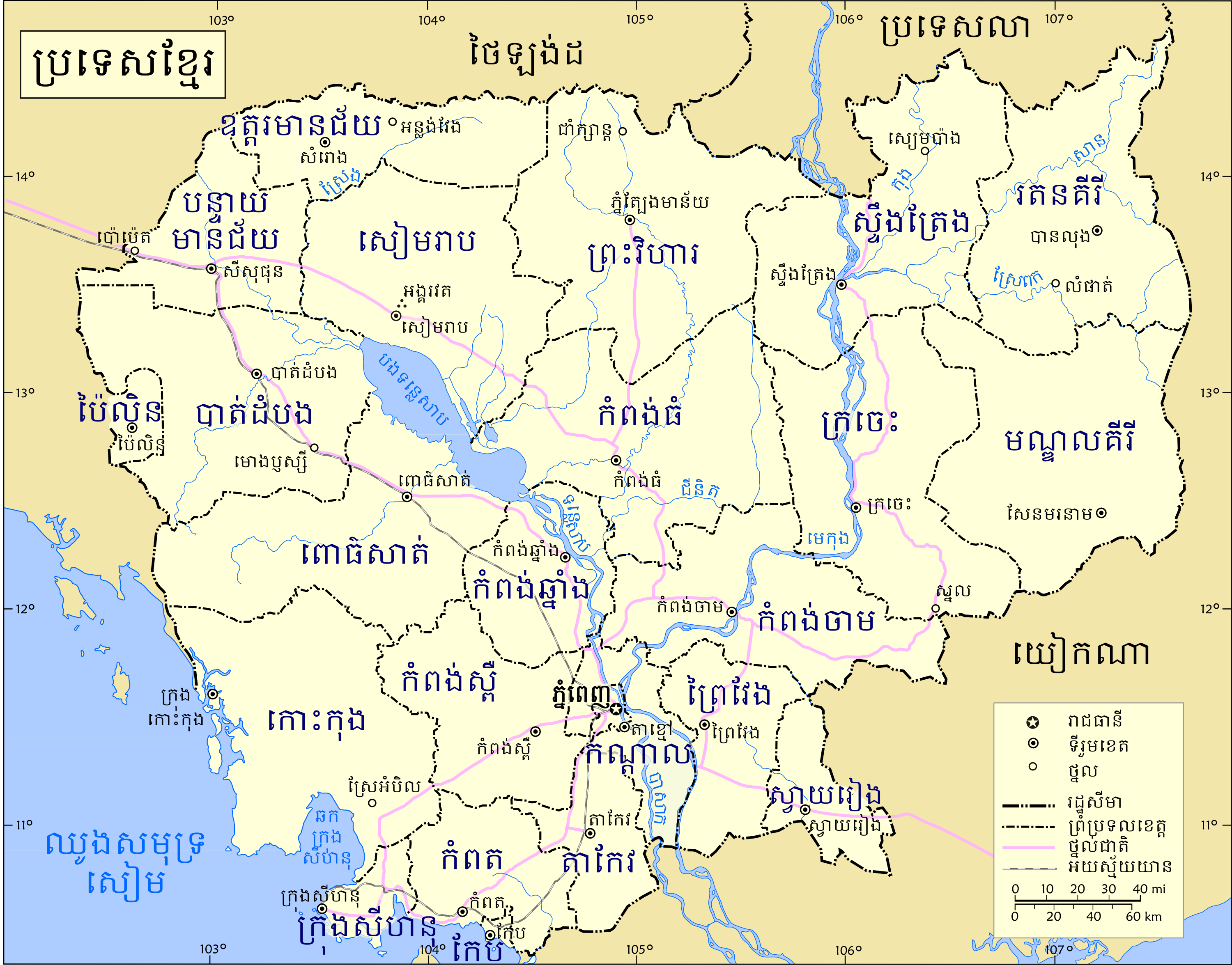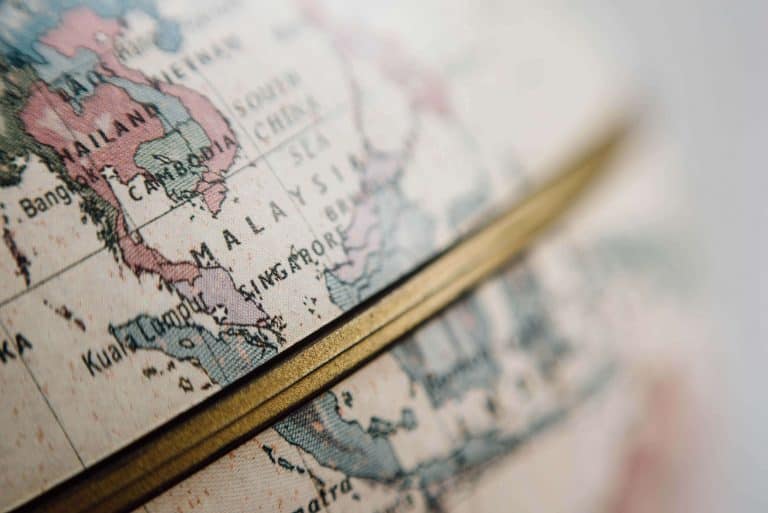About Cambodian Provinces
Cambodia is divided into 25 provinces (Khmer: ខេត្ត). The capital Phnom Penh is not a province but an "autonomous municipality" (Khmer: រាជធានី, meaning 'capital'), equivalent to a province governmentally and administered at the same level as the other 24 provinces.
Phnom Penh has both the highest population and the highest population density of all provinces, but is the second smallest in land area. The largest province by area is Mondulkiri and the smallest is Kep which is also the least populated province. Mondulkiri has the lowest population density.
Images of Cambodian Province



Cambodian Provinces and Fun Facts
Home to the famous Banteay Chhmar temple, a hidden gem of Cambodian ancient architecture.
Known for the "Bamboo Train," a unique transportation experience on bamboo platforms.
Famous for its rubber plantations and French colonial architecture.
Known for its traditional pottery, which is still made by hand today.
Renowned for its high-quality palm sugar production.
Houses the ancient Sambor Prei Kuk temples, a UNESCO World Heritage site.
World-famous for its high-quality pepper, prized by chefs worldwide.
Surrounds Phnom Penh and is known for its fruit production, especially bananas and mangoes.
Famous for its crab market and delicious seafood dishes.
Famous for its vast rainforests, mangroves, and the Cardamom Mountains, a biodiversity hotspot.
A great place to spot the rare Irrawaddy dolphins in the Mekong River.
Known for its stunning waterfalls and unique indigenous cultures.
A relatively unexplored province with ancient temples and rich forests.
Historically known for its gemstones and mining industry.
The bustling capital city, home to the Royal Palace and Cambodia's political hub.
Home to the Preah Vihear Temple, a UNESCO World Heritage site perched atop a cliff.
A largely agricultural province known for rice farming.
Known for the beautiful floating village on the Tonle Sap Lake.
Famous for its lush jungles and the volcanic Yak Loum Lake.
Home to the magnificent Angkor Wat, the largest religious monument in the world.
A coastal province famous for its beaches and islands, especially Koh Rong.
Known for its eco-tourism and access to the Mekong River biodiversity.
Known for the Bavet border crossing, a major gateway for trade with Vietnam.
Known for its historical importance as the birthplace of the ancient Khmer civilization.
One of the newer provinces, known for its agricultural production, particularly rubber.
More Information
Each province is administered by a governor, who is nominated by the Ministry of Interior, subject to approval by the Prime Minister.
Provinces are divided into districts (ស្រុក, srŏk). The districts in Phnom Penh are called khan (ខណ្ឌ) normally written as for addresses in English followed by the districts' names (Ex: Khan Chamkar Mon; lit. 'Chamkar Mon District'). The number of districts in each province varies, from two in the smallest provinces to 14 in Battambang, Prey Veng, and Siem Reap. Further subdivision levels are communes (ឃុំ khum), and further subdivided into villages (ភូមិ, phum). In Phnom Penh, sangkat (សង្កាត់) is used in the place of khum and, similar to khan, normally preferred for writing addresses in English (Ex: Sangkat Mittapheap; lit. 'Mittapheap Commune').